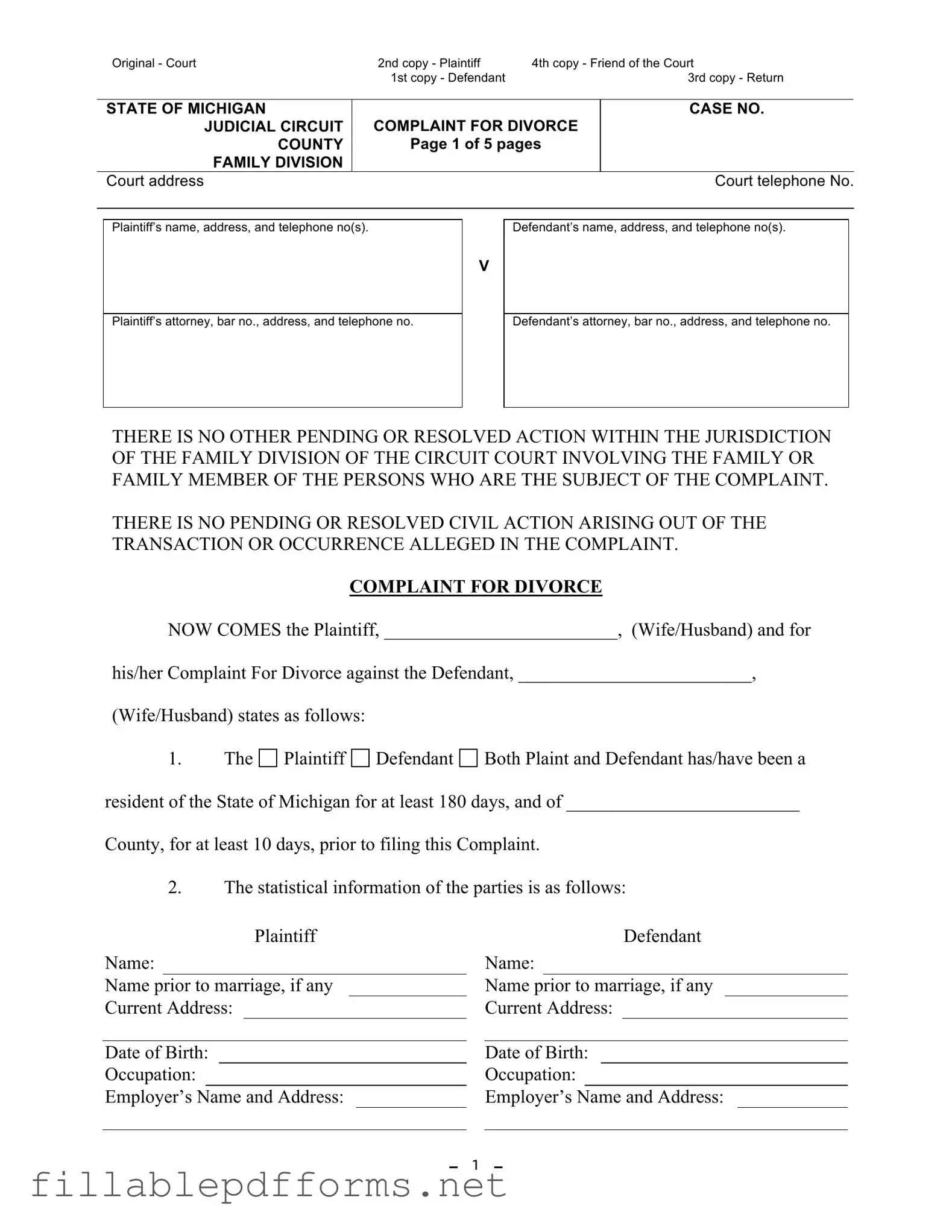The Michigan Complaint Divorce form is a critical document for individuals seeking to dissolve their marriage within the state. This form initiates the divorce process and outlines essential details about both parties involved. It requires the names, addresses, and contact information of the plaintiff and defendant, ensuring that both parties are clearly identified. The form also includes important residency information, confirming that the parties have lived in Michigan for the necessary duration before filing. Additionally, it addresses the existence of minor children, property ownership, and any prior custody proceedings, which are vital for determining custody and support arrangements. The Complaint emphasizes the breakdown of the marriage and requests the court to approve a Property Settlement Agreement, facilitating the division of assets and debts without further court intervention. Finally, it allows for the restoration of a maiden name, should the plaintiff choose to request it. Completing this form accurately is essential, as it sets the stage for the divorce proceedings and ensures that all legal requirements are met.
